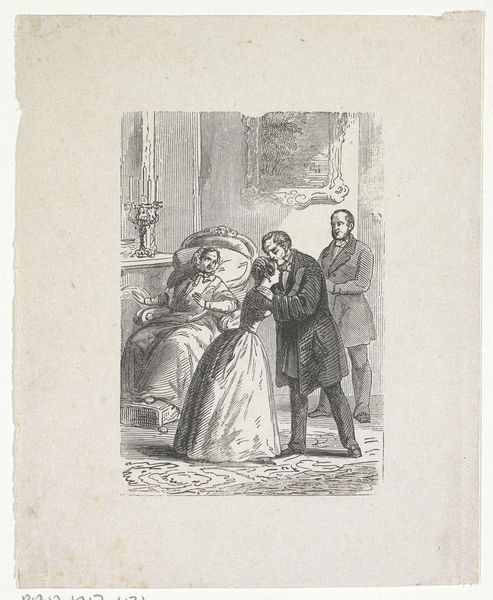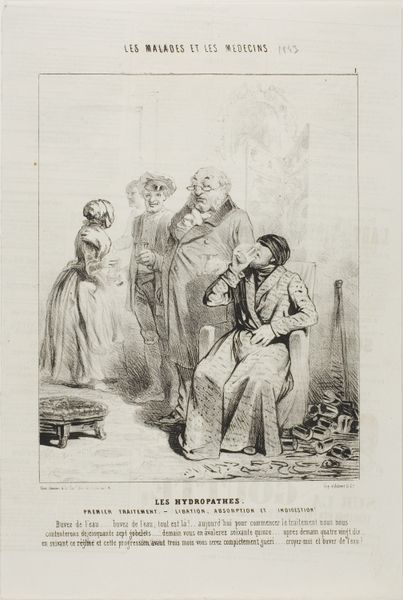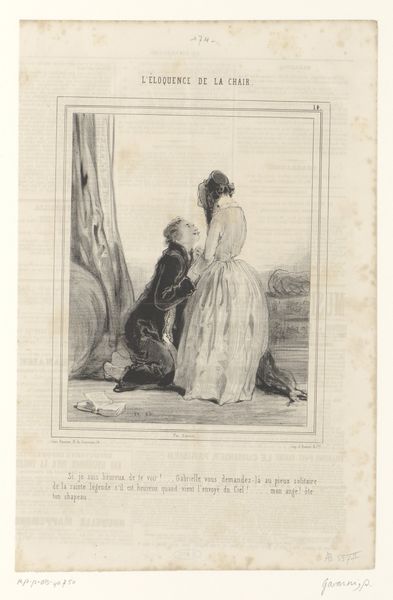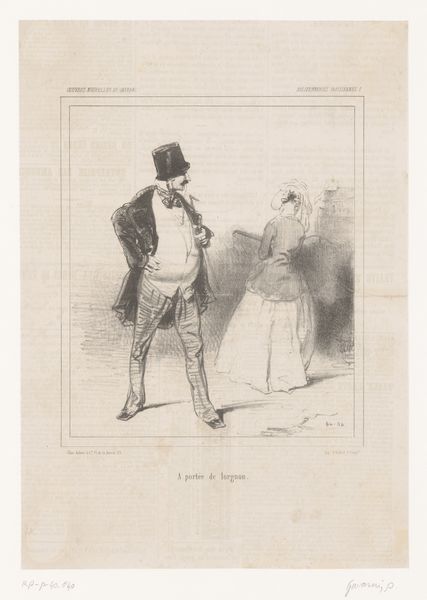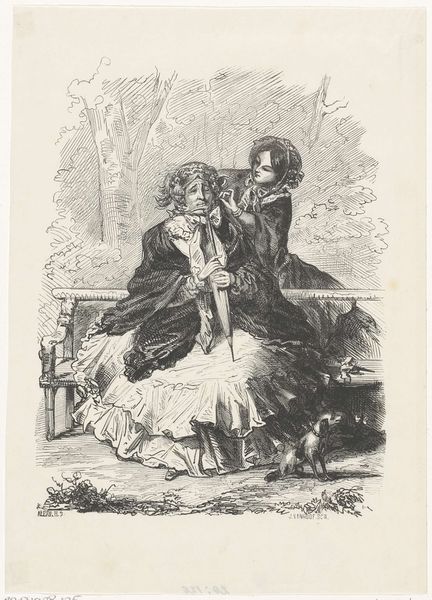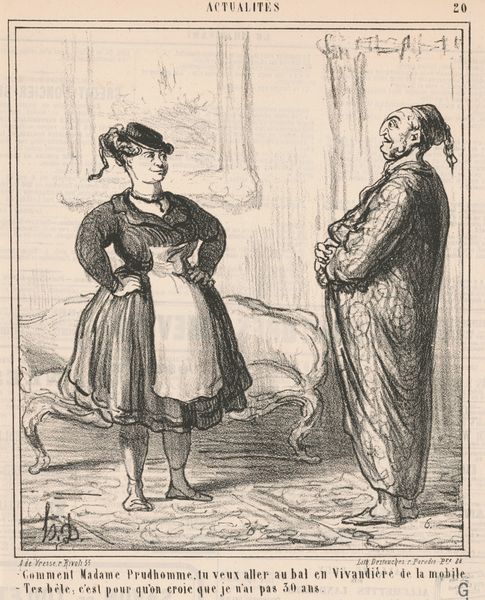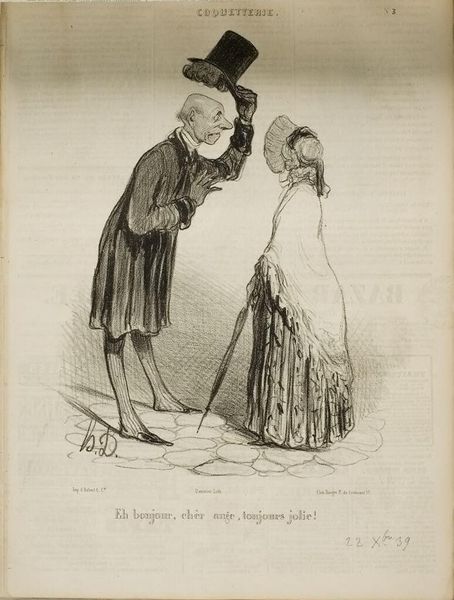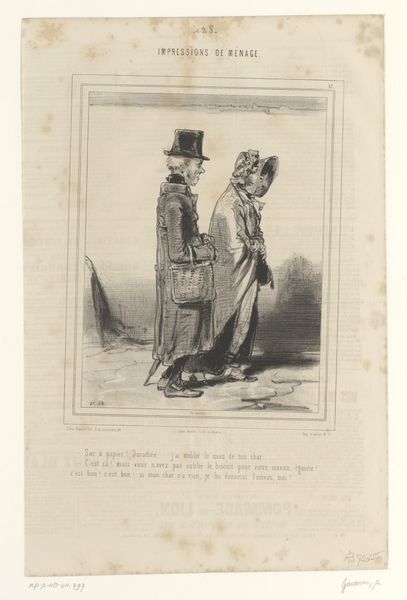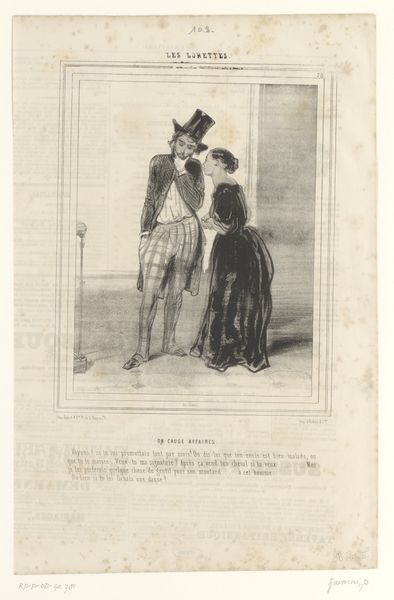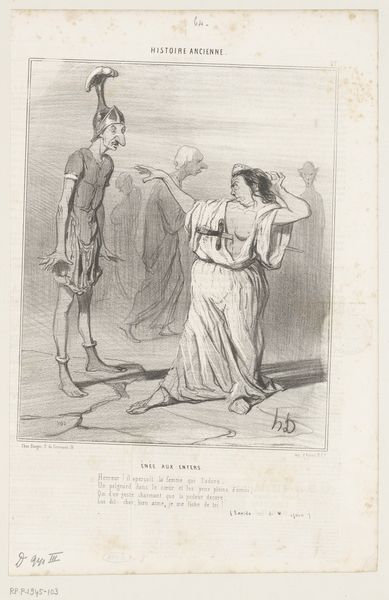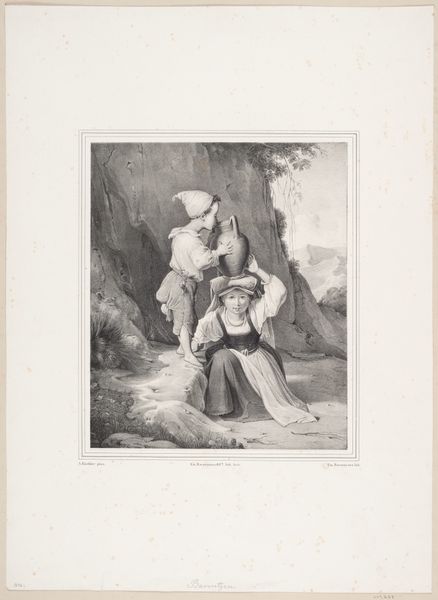
Monsieur Arthur: “- Oh Pamela! I am burning with love for you!” The husband herbalist: “- A mallow... of the family of Malvaceae... a sedative... I don't believe my friend Arthur has this specimen in the herbarium he asked me to build for him,” plate 2 from Croquades 1851
0:00
0:00
Dimensions: 245 × 208 mm (image); 352 × 262 mm (sheet)
Copyright: Public Domain
Curator: Look at this print titled “Monsieur Arthur: \u201c- Oh Pamela! I am burning with love for you!\u201d The husband herbalist: \u201c- A mallow... of the family of Malvaceae... a sedative... I don't believe my friend Arthur has this specimen in the herbarium he asked me to build for him,\u201d plate 2 from Croquades” by Honoré Daumier, created in 1851. The medium is lithograph on paper. Editor: It’s wonderfully satirical, isn’t it? The dramatic pose of Monsieur Arthur juxtaposed with the obliviousness of the husband creates such comedic tension. Curator: Absolutely. Daumier often used lithography for social commentary, and this print is a perfect example. The mass production of lithographs made his work accessible to a wide audience, influencing public opinion on the bourgeoisie and their romantic entanglements. We see it was published by “Chez Pannier’s”. Editor: Focusing on the materials, the crisp lines achieved through lithography really emphasize the distinct character types. The textural quality suggests that Daumier expertly used the grease crayon, allowing him to create this rich tonality. And the very act of reproducing these images challenges traditional artistic value! Curator: Precisely. It was part of a series called "Croquades", caricaturing contemporary French society. The humor, however, likely softened Daumier's critiques for the establishment; it's humor, after all, that often allows the medicine to go down, to paraphrase a known saying. Editor: The positioning within the frame gives narrative depth. We can analyze the material realities in this social transaction! The context reveals tensions regarding societal expectations, class distinctions, artistic process, the very commodification of intimacy, which is made possible only because we can produce these prints in quantity and, further, in relativeexpensiveness. Curator: Indeed. We can clearly view this scene through various societal lenses and their complex layers of meaning. Editor: The piece, overall, causes us to ask fundamental questions on value and how meaning comes into being by questioning high/low art divides as a symptom of bourgeois anxieties, I dare say. Curator: A thought-provoking view that really challenges conventions as to who should claim artistic licence and which content must follow them.
Comments
No comments
Be the first to comment and join the conversation on the ultimate creative platform.
